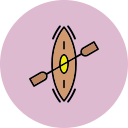Wildlife Spectacles: Lakes that Offer Stunning Photography Opportunities
Chosen theme: Wildlife Spectacles: Lakes that Offer Stunning Photography Opportunities. Step to the water’s edge where dawn fog silver-coats reeds, wings carve reflections, and patience yields photographs that feel like whispered secrets. Subscribe, comment, and share your best lakeside encounters with our growing community of nature storytellers.


Reading the Lake: Understanding Seasonal Wildlife Patterns
As ice retreats, lakes become stages for elaborate rituals. Grebes perform mirrored dances, loons echo haunting calls, and avocets paint arcs across shallows. Consult migration maps, scout at dawn, and keep a respectful distance when displays intensify. Tell us when your local lake’s first duet begins each spring.
Light on Water: Mastering Reflections and Weather

Calm Mornings: Glassy Reflections
Arrive before sunrise on days with light winds under three miles per hour; even a faint breeze can fracture reflections. Set a low vantage, level your horizon, and keep ISO modest for clean tones. Use a polarizer sparingly to preserve mirror symmetry, and time shots between ripples from surfacing fish.

Mist and Backlight Magic
When cool air meets warmer water, radiation fog turns birds into glowing calligraphy. Backlight intensifies the halo; meter carefully to protect highlights while holding feather detail. Think swans streaming gold, or flamingos at Kenya’s soda lakes ribboning through haze. Post your favorite fog settings and why they worked.

Cloud Drama Without Losing Detail
Storm edges paint lakes with contrast, but bright clouds can blow out. Watch your histogram, expose to the right without clipping, and consider bracketing or graduated filters for balance. RAW files and gentle local adjustments keep gull whites and sky texture intact. Comment with your best cloud-control tips.
Ethics and Fieldcraft at the Lakeshore
Breeding birds are vulnerable near water. Give nests a wide berth, avoid repeated approaches, and use longer lenses or hides instead of stepping closer. Let behavior be your guide: if heads lift or birds flush, retreat. Share your preferred focal lengths for safe nest-distance storytelling at local lakes.
Move with wind at your face so scent travels away, place feet on stones, and pause when birds preen to reset your presence. Once, a kingfisher resumed fishing after an hour of stillness, diving so close the splash filled the frame. Tell us how you keep patience when excitement spikes.
Your sightings can help protect habitat. Log observations on eBird or iNaturalist, coordinate with rangers about sensitive areas, and report hazards like fishing line. Consider local volunteering. Drop a comment with groups you support so others can join and keep these lakes lively for future photographers.



Stories from the Shore: Photographers’ Anecdotes
At 4:12 a.m., the trail was a ribbon of red headlamp and breath. A loon called once, then twice, the lake replying softly. When the first pink found the water, a shake sent droplets spiraling like stars. One frame, and the quiet felt earned. What was your earliest start time?
Stories from the Shore: Photographers’ Anecdotes
A warm day flipped to hard frost, and the cove sealed into thin, crystalline geometry. An otter kept breathing holes open, whiskers rimed with silver. I swapped to a wider lens to weave habitat into the story. Safety first—ice claws and a buddy—then images that felt like winter’s sketchbook.
Gear Choices Tailored to Lakeside Wildlife
A 100–400mm zoom or 400–600mm prime covers most lake subjects, with teleconverters for extra reach. Stability matters: gimbals for long glass, monopods for mobility, beanbags on docks, and low-angle plates for shoreline work. Use panning stabilization modes for flight and keep shutters high when wings accelerate.


